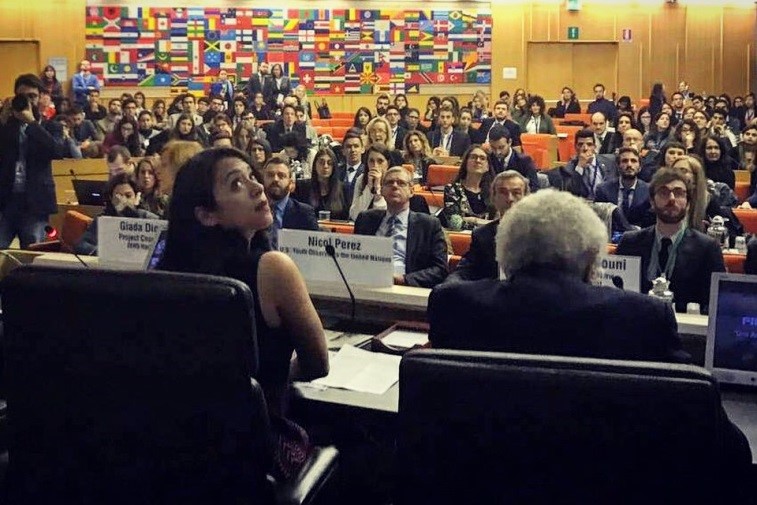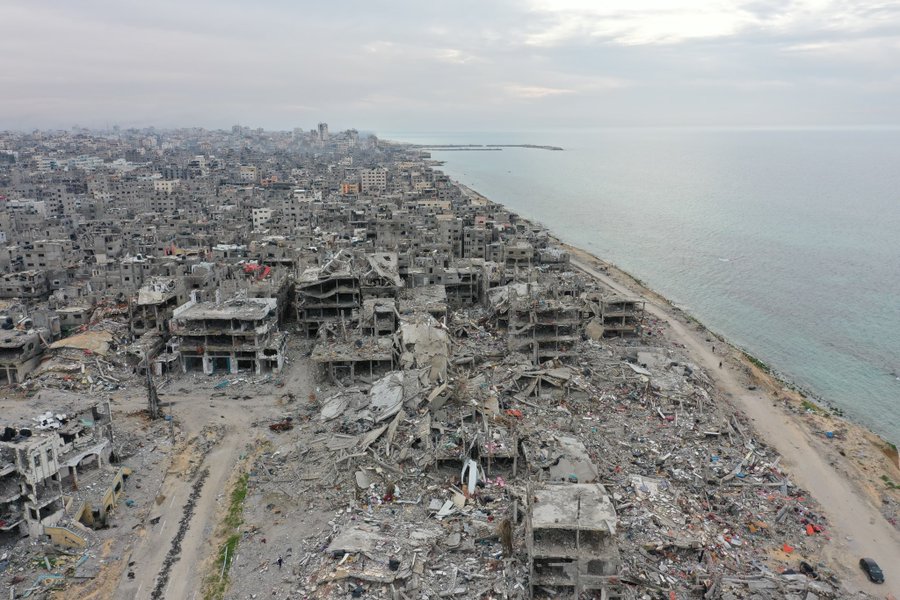Youth Voices at FAO: A Seat at the Table for #ZeroHunger
One hundred and sixty students from around the world filled the Red room at the Food and Agriculture Organization (FAO) headquarters in Rome. Several photographers walked around capturing interactions between excited students that were ready to partake in the first #zerohackathon hosted by the US Mission to UN in Rome and the = Italian Society for International Organization (SIOI) . During this hackathon, students gathered for two days to come up with solutions to some of the world’s hunger, agriculture, sustainability, and climate change challenges. The students with the best proposals would be granted the opportunity to intern at FAO and SIOI and to go on study trips to Brussels and Strasbourg. And the overall winders would have the opportunity to travel to New YorkCity and Washington, D.C. to visit the United Nations and its partners.
I was in that room not as a participant, but as a judge. Along with some incredibly accomplished people, I was there to help pick the winning proposals. In addition to judging the hackathon, I also visited FAO for a couple of other meetings.
After delivering opening remarks at the #zerohackathon, I met up with Gouri Salohke from FAO for a tour of the premises and to ask her a few questions about FAO’s mission.
The entrance at FAO was filled with photographs of people from around the world. The photographs are the work of American photographer Peter Menzel and writer Faith D’Aluisio who traveled the world documenting everything that an average family consumes in a given week—and what it costs. It was shocking to see how to see how some people have so little to eat while others across the world have so much. Check out this video for a short excerpt of my tour!
My tour of FAO increased my consciousness of how many communities around the world depend primarily on agricultural production for a living.
My tour of FAO increased my consciousness of how many communities around the world depend primarily on agricultural production for a living. It reinforced my understanding of the real threat of climate change and its effects on food production, food prices, as well as the productivity of crops, livestock, fisheries, and people. Hunger, poverty, and climate change need to be tackled together if we want to make progress on the Sustainable Development Goals. FAO’s work is at the center of those three global issues.
FAO is primarily funded by voluntary contributions from member states and other partners. The organization works with governments to advise them on policies regarding nutrition, agriculture, food consumption, food prices, natural resources management, infrastructure development, energy, among other topics. Most importantly it consults and works with the stakeholders are affected by those policies to help create sustainable practices that will drive economic development and healthy food production. Central to this effort is a push to enforce policies that will limit greenhouse gas emissions and help communities better adapt to the changing climate.
At FAO, I also had the opportunity to meet with Lee, who works to prevent and manage animal disease emergencies around the world. Lee used to be a veterinarian in the US before moving to Rome and working for FAO. Lee now tracks animal diseases around the world and works to prevent them from spreading before they get to animals in other communities. Her job is to ensure the animals people eat are safe and free of diseases that can affect our health. Did you know that there is a close link between animal and human health, especially in developing regions where animals provide transportation, draught power, fuel, clothing as well as proteins (meat, eggs and milk)? Animal health is important not only to people’s diets but also to their economic stability. Livestock contribution to agriculture GDP is significant in many developing countries. It was eye opening to learn about this because it’s not something I hear about often!
As I spoke with FAO staff, I saw the need for a greater shift in where these types of conversations take place. Many young people have the perception that to affect change in the world one can only do so in the halls of government buildings or UN Headquarters. One of the most important lessons I’ve learned throughout my term as youth observer has been that real change happens on the ground. Learning about FAO showed me that it is the work of farmers, pastoralists, fishermen, community foresters, among many other local players that can get us to our goal of zero hunger. The work of those in government and headquarters is to serve and facilitate those that will be carrying out these changes on the ground. We need innovators at all levels, but most importantly in local communities. We need to start bringing these conversations out of formal forums and into other spaces where people can be equipped with the information they need to drive change. Young people are crucial to making this happen, particularly in sectors like agriculture where we need more innovation and collaboration.
FAO is doing this by supporting their local offices around the world and by hosting events like the #zerohackathon where young people can get inspired. The organization is also doing this by offering professional opportunities geared specifically to the world’s bustling young population. For example, positions at FAO are available for yound professionals through the Junior Professional Program, Associate Professional Program, and the United Nations’Internship Program.
While sitting on stage at the #zerohackathon I felt honored and almost shocked that I had a seat at the table. This event proved just how important youth voices are to the sustainable development goals. The US Mission to the UN sponsored 16 students from around the world to participate in this event – a vote of confidence from our government on just how important youth voices are. It reinforced my passion to continue to advocate for young people in decision making tables.




